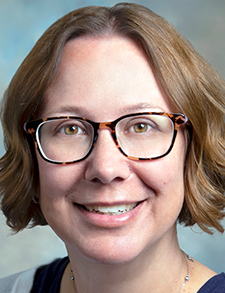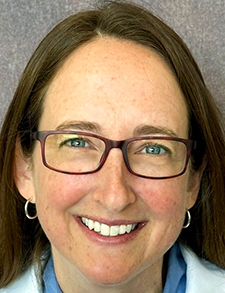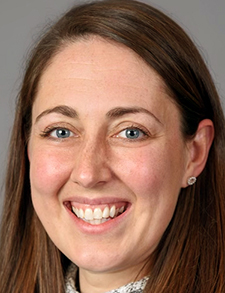 Although updates to the Accreditation Council for Graduate Medical Education (ACGME) program requirements for pediatric graduate medical education will present financial challenges to some hospitals and planning challenges for some resident programs, the changes may provide a more balanced and tailored education. It may also impact long-term training needs for residents planning to become pediatric hospitalists.
Although updates to the Accreditation Council for Graduate Medical Education (ACGME) program requirements for pediatric graduate medical education will present financial challenges to some hospitals and planning challenges for some resident programs, the changes may provide a more balanced and tailored education. It may also impact long-term training needs for residents planning to become pediatric hospitalists.
ACGME requirement changes
The ACGME is a private non-profit institution responsible for accrediting all graduate medical training programs for U.S. physicians. The goal is to provide national standards for residency programs so that all graduates from accredited ACGME programs achieve similar levels of basic competencies by completion.
The ACGME periodically revises its program requirements. When they first released proposed updated requirements for residents beginning programs in 2024, they received much initial pushback and concern from hospitalists, hospital administrators, and pediatricians, partly concerning potential financial impacts.

Dr. Hrach
Christine Hrach, MD, pediatric hospitalist and associate pediatric residency program director at St. Louis Children’s Hospital, shared that when the program requirement revisions were first released, many worried about the changes and how they might be put into place.
The ACGME opened a second comment period on the proposed requirement revisions and eventually pushed back the timeline, to give programs more time to plan. In February 2024, the slightly modified revisions were formally approved, and they are slated to go into effect for residents entering July 1, 2025.
One area of concern was the potential impact on the number of weeks that residents would spend on inpatient care. Earlier requirements were worded in terms of “educational units,” (usually equivalent to four weeks or one month). Previously, residents had to achieve a minimum of 10 educational units (i.e., 10 months) before leaving the program, but the updated minimums are for 40 weeks, (with a minimum of 16 weeks of general pediatrics or pediatric hospital medicine service).
Thus, minimum inpatient requirements are quite similar for the 2025 revision. However, the revised requirements do make some changes in terms of specialty services, which limit the number of weeks residents can spend here. For example, residents may spend no more than four weeks on a given subspecialty service (in contrast to no more than five education units or five months previously).
Similarly, former requirements specified two educational units (two months) each of both pediatric and neonatal intensive care units. The new requirements mandate 12 weeks total in intensive care units (with a minimum of four weeks in both PICU and NICU), a change which some criticized as insufficient time.
Heather L. Toth, MD, SFHM, a hospitalist and director of the internal medicine-pediatrics residency program at the Medical College of Wisconsin in Milwaukee, pointed out that programs have leeway in how they structure their specific requirements, as long as they follow overarching requirements from the ACGME. For example, specific programs can set additional requirements above ACGME minimums.

Dr. Toth
However, Dr. Toth also explained that some programs, including their pediatric residency program, had previously been using residents for more than their required number of weeks on inpatient pediatric services. But because of other changes in other areas, they need to reduce residents’ number of scheduled weeks covering inpatient services to block time for them to meet the new ACGME program requirements.
For example, in the revised requirements, primary ambulatory-care requirements increased to a minimum of 40 weeks (from a minimum of five units or five months). As a component of this, residents must receive four weeks each of developmental-behavioral pediatrics and mental health services, not previously mandated.
“I think it’s great that they’ve made the formal mental health rotation,” said Dr. Hrach. “No matter what specialty you go into these days, mental health is such a huge component.”
Additionally, residents must achieve 40 weeks of an individualized curriculum distributed across their training, designed to meet their individual needs. Residency programs can help provide guidance on electives that will complement and supplement their career aims. Thus, while some residents might choose to pursue additional inpatient hospital experiences as part of these individualized requirements, others may not.
Balancing needs for inpatient training, outpatient training, and individualization
The impetus for this increased emphasis on ambulatory care and individualized curriculum comes at least partly from feedback from residents.

Dr. Peterson
Rachel J. Peterson, (@MPAcadHosp), MD, a medicine-pediatric hospitalist at Cincinnati Children’s Hospital and one of the leaders of SHM’s med-peds special interest group, noted, “From their training, many residents felt very prepared from an inpatient standpoint, but not as well prepared to be general outpatient pediatricians.”
As residents can be paid considerably less than other medical professionals, they are a financially attractive way for hospitals to help cover inpatient services, even if extra inpatient time doesn’t ideally match residents’ educational needs and goals.
Richard Wardrop III, (@Mud_Fud), MD, PhD, FAAP, FACP, SFHM, is a med-peds-trained hospitalist and the current program director of the internal medicine residency program at the Cleveland Clinic. He shared that these requirement changes are in line with general trends in other areas of medicine that have been reprioritizing residents’ educational experiences over potential service needs, such as decreases in required ICU coverage for internal medicine residents.
Dr. Hrach said, “During residency, we should train good general pediatricians who can go out and practice primary care. Over the years, residency may have gotten a little inpatient-heavy, so I think it’s important to have more focus on outpatient medicine.”
But it’s a balance. Dr. Toth added that it’s also extremely important for trainees planning to be primary care physicians to get enough inpatient experience, e.g., to be able to recognize very sick children and how to triage them. However, she thinks that residents should be able to obtain adequate hours of pediatric inpatient training under the new requirements with the option of additional inpatient pediatric time as part of the individualized curriculum.
Dr. Peterson pointed out that the requirements will place more onus on individuals to recognize where they need additional learning; some should plan to get additional experience on inpatient services. She pointed out, for example, that individuals who want to go into more rural pediatric hospital programs may benefit from scheduling additional NICU training time.
The same applies to procedural requirements, which were eliminated in the recent update. Programs may still make individual choices to teach or evaluate residents on certain procedures, but individual residents may need to take the lead in making sure they are proficient in the skills that most apply to their future careers.
Financial impacts and scheduling changes
Some pediatric hospital divisions will need to increase the hiring of advanced practice practitioners and hospitalists for 2025 due to decreased numbers of residents on wards and subspecialty teams. However, this will vary by institution, partly depending on their previous residency and staffing arrangements. Dr. Peterson pointed out that academic pediatric hospitals in particular often rely significantly on their resident workforce.
Pediatric hospitals have faced staffing shortages and higher labor costs, partly driven by the greater need for contract labor, and they also face challenges from comparatively decreased reimbursement of pediatrics compared to adult medicine (i.e., Medicaid reimbursement levels versus Medicare). Navigating the changes may be more challenging for institutions already operating at very thin financial margins.
As an additional potential financial impact, the revised requirements mandate that programs supply core faculty members with 0.1 FTE (full-time equivalent) for their time supporting the program that does not involve direct patient care. This provides faculty with some protected time in which to do more educational work with residents, especially helpful as the amount of individualization in the pediatrics requirements has been so clearly defined.
Dr. Wardrop added, “Having well-run and well-supported GME programs is aligned with better patient outcomes. But some places may see the FTE requirements as an unfunded mandate.”
Dr. Toth explained that at her institution, they have already been planning for and making changes to account for the 2025 requirements. For example, they are eliminating a previously resident-led, inpatient, winter, hospital team in favor of teams buffered with additional hospitalist physicians and advanced practice practitioners. They are also eliminating an admitting-resident role to allow residents to choose from other residency experiences.
Dr. Toth noted that, partially because of these changes, her program is moving to an X + Y + Z scheduling program on the pediatric side. Such a schedule allows distinct blocks of outpatient versus inpatient versus clinic time, as opposed to a program design in which inpatient and outpatient exposure is more mixed (e.g., with hospital coverage in the morning and clinic in the afternoon).
Dr. Peterson pointed out that the requirement changes may affect how residency programs handle some nocturnal coverage, as resident teams are not permitted to cover teams at night that they have not covered during the day. “Some hospitals just have not prepared for that,” she added.
Dr. Wardrop also explained that institutions may reorganize patient-care services to deal with limits on residents’ availability to provide specialty team coverage. For example, patients might be reorganized from a subspecialty team to a general medicine team, which would allow for greater flexibility in residents reaching their subspecialty limits.
Approaching fellowship and specialization
The requirement changes will enlarge existing differences between training for future pediatric versus adult hospitalists, as adult internal medicine training currently puts greater emphasis on inpatient medicine. In contrast, pediatric hospitalist medicine is becoming viewed more as a specialty within pediatrics. Because the outpatient management of many conditions has improved, the inpatient care of children who truly need to be hospitalized has become more complex.
The introduction of pediatric hospitalist fellowships has been a controversial area, as a similar equivalent doesn’t exist for adult medicine. The shift to more of an outpatient emphasis for general pediatric training may be in line with this approach, as some graduates leaving pediatric residency may not need all the same training as someone planning to be a pediatric hospitalist.
Dr. Peterson noted that the change in requirements might increase the usefulness and appeal of the pediatric-hospitalist fellowship, as it provides additional inpatient clinical exposure. However, some physicians will still choose to enter pediatric hospital medicine right out of residency. Some may opt for individualized curriculum choices during residency to help them prepare well for such a setting, but others may not.
“Will these changes decrease individuals’ comfort in being a pediatric hospitalist straight out of residency?” said Dr. Peterson. “I’m not sure. We will have to watch to see if these changes in training impact the competence of recently graduated pediatric residents.”
Every approach to training requirements has inherent limits, but the more individualized approach is designed to ensure residents are more prepared for their chosen path after residency, whether for work as a primary-care physician, a pediatric specialist, or a pediatric hospitalist.
Dr. Wardrop does not believe the new approach is too focused on outpatient medicine. He added, “With 40 weeks of inpatient medicine, 40 weeks of outpatient medicine, and 40 weeks of individualized curriculum, you’re creating a very sophisticated, well-rounded trainee.”
Dr. Hrach reported much of the initial concern about the requirement changes seems to have dissipated, at least at many institutions, as it became clearer what exactly the changes entailed and how they might be practically implemented. “Overall, I now think the changes are good for pediatric programs,” she said.
Ruth Jessen Hickman, MD, is a graduate of the Indiana University School of Medicine. She is a freelance medical writer living in Bloomington, Ind.